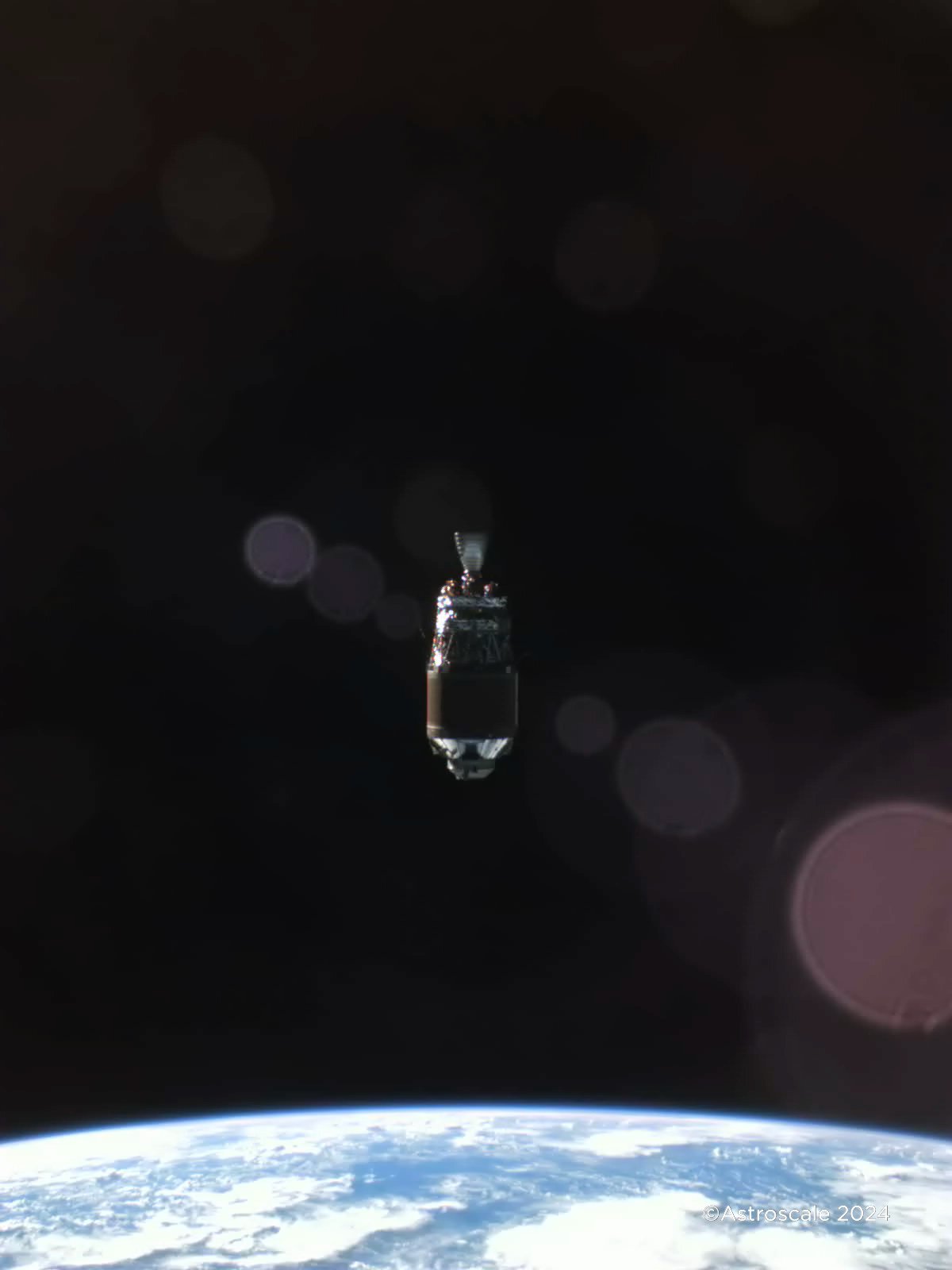Astroscale Company has published a new image of the spent upper stage of the Japanese H-2A rocket. It was captured by the ADRAS-J satellite during the first-ever space debris rendezvous and research operation.

The ADRAS-J satellite was built by Astroscale on behalf of JAXA. It was launched into orbit in February 2024. The main task of the 150-kilogram spacecraft is to demonstrate the possibility of removing large fragments of space debris from orbit. The upper stage of the H-2A rocket, which has been in orbit since 2009, was chosen as the object for the demonstration. It is 11 metres long, 4 metres in diameter and weighs about 3 tonnes.
After the launch, ADRAS-J began to manoeuvre towards the orbit of the spent stage using GPS and ground observations. By May, it had approached it to a distance of 50 metres. After that, engineers began the next phase of the mission. As part of it, ADRAS-J had to fly around the spent stage and collect as much information as possible about its structural condition and movement features. This data will be needed to organise the second phase of the mission. During this stage, a specialised spacecraft will be sent to the stage to try to deorbitalise it.
The stage was flown over completely autonomously. The operation used lidar, light detection sensors, and specially developed software algorithms for alignment and control. ADRAS-J was kept at a fixed distance of about 50 metres from the stage. However, when the satellite had travelled about a third of the way (120 degrees), the on-board collision avoidance system interrupted the operation due to an unexpected orientation anomaly. ADRAS-J then moved away to a safe distance.
Despite the fact that ADRAS-J failed to complete the overflight, Astroscale emphasises that the retreat manoeuvre demonstrated the effectiveness of the collision avoidance system. The satellite was not damaged and is in good technical condition. Therefore, the mission specialists intend to repeat the operation in the near future.
According to astroscale.com

